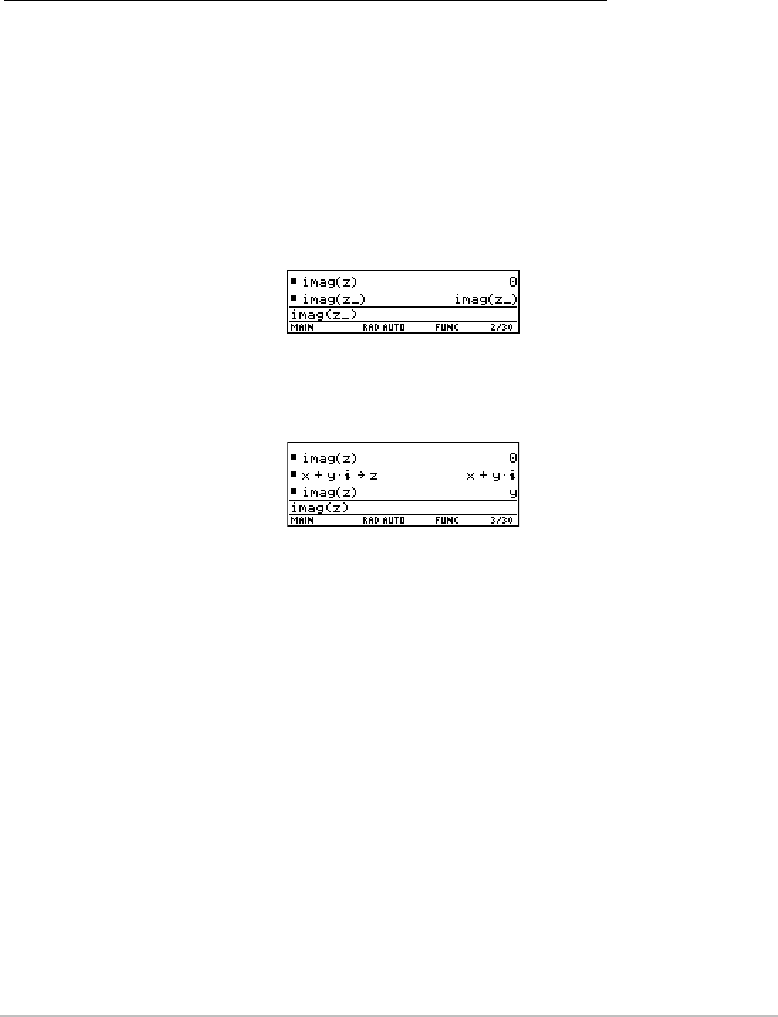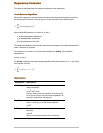
Appendix B: Technical Reference 939
Using Complex Variables in Symbolic Calculations
Using Complex Variables in Symbolic CalculationsUsing Complex Variables in Symbolic Calculations
Using Complex Variables in Symbolic Calculations
Regardless of the Complex Format mode setting, variables that have no stored value and those
that do not end with an underscore (_) are treated as real numbers. To perform complex symbolic
analysis, you can use either of the following methods to set up a complex variable.
Method 1: Use an underscore _ (TI-89 Titanium: ¥, Voyage™ 200 2 ) as the last
character in the variable name to designate a complex variable. For example:
Method 2:
Store an unreal value into any variable. For example:
Note: For best results in calculations such as
cSolve() and cZeros(), use Method 1.
Complex Numbers and Degree Mode
Complex Numbers and Degree ModeComplex Numbers and Degree Mode
Complex Numbers and Degree Mode
Radian angle mode is recommended for complex number calculations. Internally, the
TI-89 Titanium / Voyage™ 200 converts all entered trig values to radians, but it does not
convert values for exponential, logarithmic, or hyperbolic functions.
In Degree angle mode, complex identities such as e^(
i
ii
i
q) = cos(q) + i sin(q) are not
generally true because the values for cos and sin are converted to radians, while those
for e^( ) are not. For example, e^(
i
ii
i
45) = cos(45) +
i
ii
i
sin(45) is treated internally as e^(
i
ii
i
45)
= cos(
π/4) +
i
ii
i
sin(π/4). Complex identities are always true in Radian angle mode.
Note: If you use Degree angle mode, you must make polar entries in the form
(r ∠ q). In
Degree or Gradian angle mode, an
r e
i
ii
i
q
entry causes an error.
REAL Will not display complex results unless you:
• Enter a complex number.
– or –
• Use a complex function such as cFactor(),
cSolve(), or cZeros().
If complex results are displayed, they will be
shown in either a+bi or r
e
i
q
form.
Note: You can enter complex numbers in any
form (or a mixture of all forms) depending on
the Angle mode.
RECTANGULAR Displays complex results as a+bi.
POLAR Displays complex results as:
• r e
i
q
if the Angle mode = Radian
– or –
• (r ,ùq) if the Angle mode = Degree or
Gradian
z_ is treated as a
complex variable if it
does not have a stored
value.
x+yi!z
Then z is treated as a
complex variable.


















